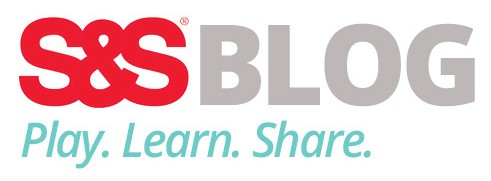In order to run a program at a high level, you have to be an effective communicator. You can never communicate too much! Keeping your participants, staff, and volunteers in the loop in every aspect of your program can only help. Communication is engrained in every aspect of your program. Here are six tips to be a great communicator at camp!
Use Multiple Platforms to Communicate: Email, social media, apps, websites, phone calls, text, and face to face meetings are all examples of ways to communicate to your participants and those interested in your program. If you are using multiple communication channels both internally and externally, and your participants know where to find the information, there should be no reason a participant tells you “they didn’t know” when something comes up.
Communicate Before and After your Camp Season: Once you release your initial dates, make sure to remind people as you get closer to registration. Don’t just assume they will remember! Once camp ends, let your participants know the next start dates before they finish. Once you have them in the door, keep them in by always letting them know when the next program takes place.
Communicate During Registration: Whether your participants register online or in person it is important that they have all the needed information for the upcoming camp. Make sure your participants are ready and prepared for their fist day. If you have a registration window, make sure you are sending reminders leading up to your first date.
Send Weekly Communications During Camp: At a minimum you should send your parents an email at least once a week. In the email recap the week and give any updates or important information for the coming weeks. If there is nothing to report on, it can be as simple as letting them know it was a great week and you look forward to the next week while outlining upcoming activities. You can turn this into a program newsletter, add pictures or multi-media, and showcase all those special moments you had that week at camp.
Set Up a Line of Communication with Staff and Volunteers: Make sure everyone involved in the daily operation of your camp is in the loop on your operation on a daily basis. Sometimes, the most frustrating thing for a staff member or volunteer is being left out and having to figure out what they are supposed to be doing. Review the days schedule and activities every morning and check in with your staff when time permits throughout the day.
Be Responsive: If you get a question or concern that comes in person, email, or over the phone make sure you respond to the inquiry as soon as you can. At the very least, acknowledge you received the message within 24 hours even if you need time to research the situation. This will go a long way in keeping your participants happy and trusting you will address their needs.
Here are several ways for you and your staff members can be better communicators:
Creation
The first step in communicating a message is creating the message. This requires that the individual sending the message decide what he wants to say, and selects a medium through which to communicate this information.
Identify the Desired Outcome
Be clear on the message you wish to convey. What is the outcome you are trying to achieve? What is the take home message? Understanding the outcome you want helps you refine your communication by removing all the extraneous content of you message. Stick to the point. Less words means less chance for misunderstanding.
Transmission
After a message is created, it must be transmitted. This transmission may be as simple as meeting with the intended recipient of the message and orally sharing the message, or calling the individual to communicate orally over the phone. If the message is written, it could include distributing a paper memo or sending an email. Often, the number of individuals that the message must reach will influence the transmission.
Consider Your Tone
The tone in which you deliver the message is often more important than the message itself. Tone exists in both written and verbal communication. A harsh verbal tone will undermine a positive message. A gentle or cheery tone can take away the seriousness of a disciplinary message. So a mismatched tone can actually block the message from being understood. Tone is important in written communication too. A harsh written tone includes capital letters and bolded words as well as short, sharp sentences. If something is serious enough to be communicated in capital or bolded letters it may be better expressed in person. If you are looking for understanding, considering tone is vital to a constructive two way communication.
Reception
After transmitting the message, the communication duties change hands and fall upon the receiver of the message. This individual must obtain the message either from the written format the sender selected or by listening carefully as the message is delivered orally.
Translation
Once receiving the message, the recipient must translate the message into terms that she can easily understand. To do this, she must listen to or read the message in question and paraphrase it within her head, turning the potentially complex contents of the message into more manageable and meaningful components.
Check for Understanding
Look for non-verbal cues in communication. Nodding, facial expression and body language need to be processed by both sides in order to understand if the message is being accurately received. Ask the listener to paraphrase what you have said and check for understanding. Look for inconsistencies or misunderstandings and address them immediately and clearly.
Response
Communication is a two-way street and response is often necessary. Message recipients take the lead in concluding the communication process by crafting a response to the message. This response may be verbal and immediate, which would commonly be the case if the communication is face-to-face. It may also be a written response that either expands upon the message or simply indicates receipt of the message in question.
Ask for Feedback
Listening is one of the most important art-forms in communication. With complicated or important messages, ask for feedback on what you have said and listen without interrupting. Finding out how what you have said has impacted on the other person can help you improve your messages for the future, as well as clear up further misunderstanding at the time.
Communication is a two way street. If you are not getting the message go find the answers you need!
Favorite







